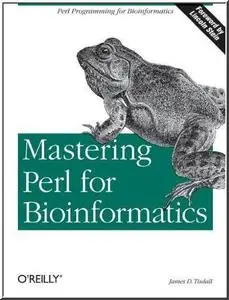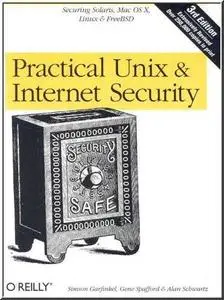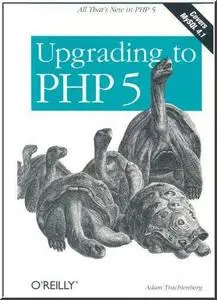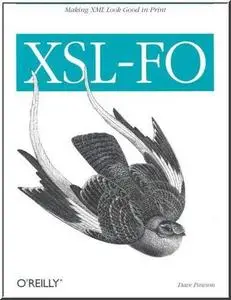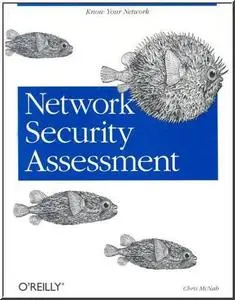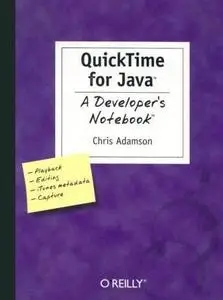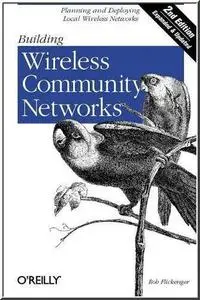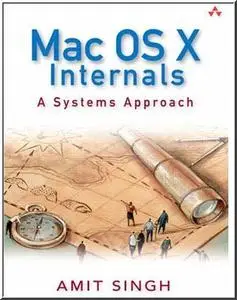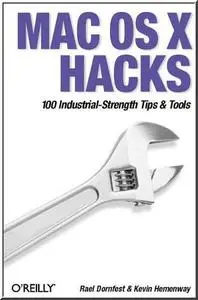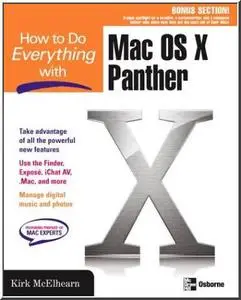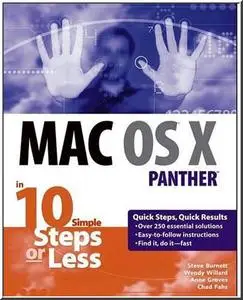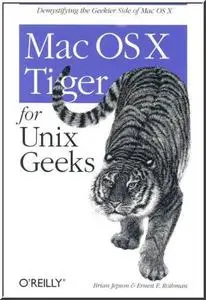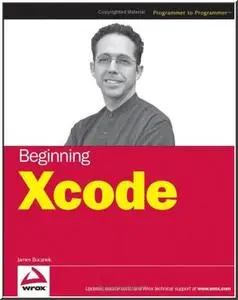| Su | Mo | Tu | We | Th | Fr | Sa |
|---|---|---|---|---|---|---|
| 31 | 1 | 2 | 3 | 4 | 5 | 6 |
| 7 | 8 | 9 | 10 | 11 | 12 | 13 |
| 14 | 15 | 16 | 17 | 18 | 19 | 20 |
| 21 | 22 | 23 | 24 | 25 | 26 | 27 |
| 28 | 29 | 30 | 31 | 1 | 2 | 3 |
Attention❗ To save your time, in order to download anything on this site, you must be registered 👉 HERE. If you do not have a registration yet, it is better to do it right away. ✌

SpicyMags.xyz

SpicyMags.xyz
Mastering Perl for Bioinformatics by James D. Tisdall
Date: 23 Jan 2007 21:04:00
Mastering Perl for Bioinformatics by James D. Tisdall
Publisher: O'Reilly Media; 1 edition (June 2003) | ISBN-10: 0596003072 | CHM | 0,7 Mb | 377 pages
Publisher: O'Reilly Media; 1 edition (June 2003) | ISBN-10: 0596003072 | CHM | 0,7 Mb | 377 pages
Historically, programming hasn't been considered a critical skill for biologists. But now, with access to vast amounts of biological data contained in public databases, programming skills are increasingly in strong demand in biology research and development. Perl, with its highly developed capacities in string handling, text processing, networking, and rapid prototyping, has emerged as the programming language of choice for biological data analysis.
Practical Unix & Internet Security, 3rd Edition by Simson Garfinkel, Gene Spafford, Alan Schwartz
Date: 23 Jan 2007 21:02:00
Practical Unix & Internet Security, 3rd Edition by Simson Garfinkel, Gene Spafford, Alan Schwartz
Publisher: O'Reilly Media; 3 edition (February 28, 2003) | ISBN-10: 0596003234 | CHM | 2,4 Mb | 984 pages
Publisher: O'Reilly Media; 3 edition (February 28, 2003) | ISBN-10: 0596003234 | CHM | 2,4 Mb | 984 pages
When Practical Unix Security was first published more than a decade ago, it became an instant classic. Crammed with information about host security, it saved many a Unix system administrator from disaster. The second edition added much-needed Internet security coverage and doubled the size of the original volume. The third edition is a comprehensive update of this very popular book - a companion for the Unix/Linux system administrator who needs to secure his or her organization's system, networks, and web presence in an increasingly hostile world.
Upgrading to PHP 5 by Adam Trachtenberg
Date: 23 Jan 2007 20:59:00
Upgrading to PHP 5 by Adam Trachtenberg
Publisher: O'Reilly Media; 1 edition (July 2004) | ISBN-10: 0596006365 | CHM | 0,6 Mb | 327 pages
Publisher: O'Reilly Media; 1 edition (July 2004) | ISBN-10: 0596006365 | CHM | 0,6 Mb | 327 pages
If you're using PHP 4, then chances are good that an upgrade to PHP 5 is in your future. The more you've heard about the exciting new features in PHP 5, the sooner that upgrade is probably going to be. Although an in-depth, soup-to-nuts reference guide to the language is good to have on hand, it's not the book an experienced PHP programmer needs to get started with the latest release. What you need is a lean and focused guide that answers your most pressing questions: what's new with the technology, what's different, and how do I make the best use of it? In other words, you need a copy of Upgrading to PHP 5.
Linux in a Windows World by Roderick Smith
Date: 23 Jan 2007 20:57:00
Linux in a Windows World by Roderick Smith
Publisher: O'Reilly Media; 1 edition (March 1, 2005) | ISBN-10: 0596007582 | CHM | 2,5 Mb | 478 pages
Publisher: O'Reilly Media; 1 edition (March 1, 2005) | ISBN-10: 0596007582 | CHM | 2,5 Mb | 478 pages
Linux's unparalleled functionality and adaptability have made it the main alternative to Unix and Microsoft Windows operating systems. And with good reason. System administrators realize that this robust alternative can greatly improve their operating system's reliability and save them money, too. Linux systems are even less vulnerable to attacks by computer viruses and worms. Not surprisingly, businesses, government agencies, schools, and a wealth of other institutions are all looking to Linux to replace the Windows desktop for these same benefits.
XSL FO by Dave Pawson
Date: 23 Jan 2007 20:55:00
XSL FO by Dave Pawson
Publisher: O'Reilly Media; 1 edition (August 15, 2002) | ISBN-10: 0596003552 | CHM | 0,6 Mb | 264 pages
Publisher: O'Reilly Media; 1 edition (August 15, 2002) | ISBN-10: 0596003552 | CHM | 0,6 Mb | 264 pages
No matter how flexible and convenient digital information has become, we haven't done away with the need to see information in print. Extensible Style Language-Formatting Objects, or XSL-FO, is a set of tools developers and web designers use to describe page printouts of their XML (including XHTML) documents. If you need to produce high quality printed material from your XML documents, then XSL-FO provides the bridge.
Network Security Assessment by Chris McNab
Date: 23 Jan 2007 20:52:00
Network Security Assessment by Chris McNab
Publisher: O'Reilly Media; 1 edition (March 1, 2004) | ISBN-10: 059600611X | CHM | 1,7 Mb | 371 pages
Publisher: O'Reilly Media; 1 edition (March 1, 2004) | ISBN-10: 059600611X | CHM | 1,7 Mb | 371 pages
There are hundreds–if not thousands–of techniques used to compromise both Windows and Unix-based systems. Malicious code and new exploit scripts are released on a daily basis, and each evolution becomes more and more sophisticated. Keeping up with the myriad of systems used by hackers in the wild is a formidable task, and scrambling to patch each potential vulnerability or address each new attack one-by-one is a bit like emptying the Atlantic with paper cup.
Quick Time for Java: A Developer's Notebook by Chris Adamson
Date: 23 Jan 2007 20:50:00
Quick Time for Java: A Developer's Notebook by Chris Adamson
Publisher: O'Reilly Media; 1 edition (February 1, 2005) | ISBN-10: 0596008228 | CHM | 2,4 Mb | 233 pages
Publisher: O'Reilly Media; 1 edition (February 1, 2005) | ISBN-10: 0596008228 | CHM | 2,4 Mb | 233 pages
QuickTime Java (QJT) is a terrific multimedia toolkit, but it's also terrifying to the uninitiated. Java developers who need to add audio, video, or interactive media creation and playback to their applications find that QTJ is powerful, but not easy to get into. In fact, when it comes to class-count, QuickTime Java is nearly as large as all of Java 1.1.
Building Wireless Community Networks, 2nd Edition by Rob Flickenger
Date: 23 Jan 2007 20:48:00
Building Wireless Community Networks, 2nd Edition by Rob Flickenger
Publisher: O'Reilly Media; 2 edition (June 30, 2003) | ISBN-10: 0596005024 | CHM | 1,2 Mb | 176 pages
Publisher: O'Reilly Media; 2 edition (June 30, 2003) | ISBN-10: 0596005024 | CHM | 1,2 Mb | 176 pages
Building Wireless Community Networks is about getting people online using wireless network technology. The 802.11b standard (also known as WiFi) makes it possible to network towns, schools, neighborhoods, small business, and almost any kind of organization. All that's required is a willingness to cooperate and share resources.
Mac OS X Tiger Killer Tips by Scott Kelby
Date: 23 Jan 2007 20:38:00
Mac OS X Tiger Killer Tips by Scott Kelby
Publisher: New Riders Press (August 8, 2005) | ISBN-10: 0321290542 | CHM | 16,4 Mb | 400 pages
Publisher: New Riders Press (August 8, 2005) | ISBN-10: 0321290542 | CHM | 16,4 Mb | 400 pages
Have you ever noticed that in just about every Mac book, the author will include a couple of tips in each chapter (you'll usually find them in the sidebar, or at the bottom of the page in a tinted box). Sometimes it's a shortcut, a faster way to do something, or a clever workaround that just makes your life easier. People really love those tips, but there's only one problem–there's never enough of them.
That's why Scott Kelby, bestselling author and Editor-in-Chief of Mac Design magazine came up with the idea to create a book that's nothing but sidebar tips. That's right–this entire book, cover-to-cover is packed with nothing but those cool inside secrets, slick workarounds, undocumented shortcuts, and sneaky little tricks that will make you faster, better, and have more fun using Mac OS 10.4 (Tiger).
Mac OS X Hacks by Rael Dornfest, Kevin Hemenway
Date: 23 Jan 2007 20:33:00
Mac OS X Hacks by Rael Dornfest, Kevin Hemenway
Publisher: O'Reilly; 1 edition (March 24, 2003) | ISBN-10: 0596004605 | PDF | 12,2 Mb | 304 pages
Publisher: O'Reilly; 1 edition (March 24, 2003) | ISBN-10: 0596004605 | PDF | 12,2 Mb | 304 pages
Mac OS X is a marvelous confluence of the user-friendly and highly customizable Macintosh of yesteryear and the power and flexibility of Unix under the hood. Those coming to Mac OS X from previous incarnations of the operating system recognize much of the friendly face of the Macintosh but they are also plunged into a whole new world. Unix converts to Mac OS X find a familiar FreeBSD-like operating system at the core and many of the command-line applications that they're familiar with.
This presents a unique opportunity for combining traditional Unix hacking and Mac OS know-how. Mac OS X Hacks goes beyond the peculiar mix of man pages and not-particularly-helpful Help Center, pulling the best tips, tricks, and tools from the Mac power users and Unix hackers themselves.
How to Do Everything with Mac OS X Panther (How to Do Everything) by Kirk McElhearn
Date: 23 Jan 2007 20:30:00
How to Do Everything with Mac OS X Panther (How to Do Everything) by Kirk McElhearn
Publisher: McGraw-Hill Osborne Media; 1 edition (February 2, 2004) | ISBN-10: 007225355X | CHM | 22,8 Mb | 512 pages
Publisher: McGraw-Hill Osborne Media; 1 edition (February 2, 2004) | ISBN-10: 007225355X | CHM | 22,8 Mb | 512 pages
Covers Mac OS X Panther and its bundled applications in detail, while handling more challenging topics such as networking, Internet security, wireless operation, and maintenance in an approachable way. Learn how to use the Finder, how to manage files, how to work with digital media, and much more. A bonus feature of the book is the spotlight on «Writers and their Macs,» which offers glimpses of how three writers work with their Macs: novelist Arthur Golden (Memoirs of a Geisha), screenwriter Mike Rich (Finding Forrester), and suspense writer Jeff Abbott (Cut and Run).
Mac OS X Panther in 10 Simple Steps or Less by Steve Burnett
Date: 23 Jan 2007 20:24:00
Mac OS X Panther in 10 Simple Steps or Less by Steve Burnett, Wendy Willard, Anne Groves, Chad Fahs, Wendy Willard, Anne Groves, Chad Fahs
Publisher: John Wiley & Sons (May 7, 2004) | ISBN-10: 0764542389 | PDF | 23,8 Mb | 598 pages
Publisher: John Wiley & Sons (May 7, 2004) | ISBN-10: 0764542389 | PDF | 23,8 Mb | 598 pages
Shows how to get to work with "Panther," presenting more than 250 essential tasks that users can complete in ten steps or less
— Each task is presented on a two-page spread, making the book easy to use while working at the computer
— The task-oriented text focuses on quick results, with minimal background, history, or theory
— Written for users who want a comprehensive resource that answers "how do I" questions about performing basic functions, customizing the system, boosting productivity, and even working with "command-line" Unix functions
Mac OS X Tiger for Unix Geeks by Brian Jepson, Ernest E Rothman
Date: 23 Jan 2007 20:08:00
Mac OS X Tiger for Unix Geeks by Brian Jepson, Ernest E Rothman
Publisher: O'Reilly Media; 3 edition (June 1, 2005) | ISBN-10: 0596009127 | CHM | 6,6 Mb | 395 pages
Publisher: O'Reilly Media; 3 edition (June 1, 2005) | ISBN-10: 0596009127 | CHM | 6,6 Mb | 395 pages
If you're one of the many Unix developers drawn to Mac OS X for its Unix core, you'll find yourself in surprisingly unfamiliar territory. Unix and Mac OS X are kissing cousins, but there are enough pitfalls and minefields in going from one to another that even a Unix guru can stumble, and most guides to Mac OS X are written for Mac aficionados. For a Unix developer, approaching Tiger from the Mac side is a bit like learning Russian by reading the Russian side of a Russian-English dictionary. Fortunately, O'Reilly has been the Unix authority for over 25 years, and in Mac OS X Tiger for Unix Geeks, that depth of understanding shows.
Beginning Xcode (Programmer to Programmer) by James Bucanek
Date: 23 Jan 2007 20:05:00
Beginning Xcode (Programmer to Programmer) by James Bucanek
Publisher: Wrox (April 3, 2006) | ISBN-10: 047175479X | CHM | 37 Mb | 590 pages
Publisher: Wrox (April 3, 2006) | ISBN-10: 047175479X | CHM | 37 Mb | 590 pages
Xcode is a powerful suite of free development tools from Apple Computer that will allow you to create Macintosh applications, plug-ins, web components, applets, and more using languages such as C, C++, Objective-C, Java, and AppleScript. What you will learn from this book: Control window layout to match your development style. Master source file organization. How to access a source control management system, right in the Xcode interface. How to quickly navigate to files, symbols, bookmarks, declarations, and definitions within your project; find reference documents and instantly access API documentation.


